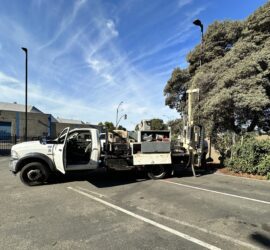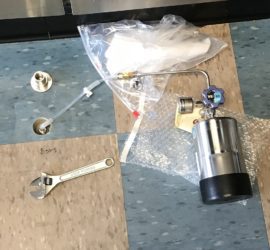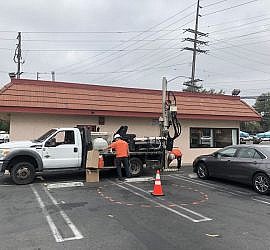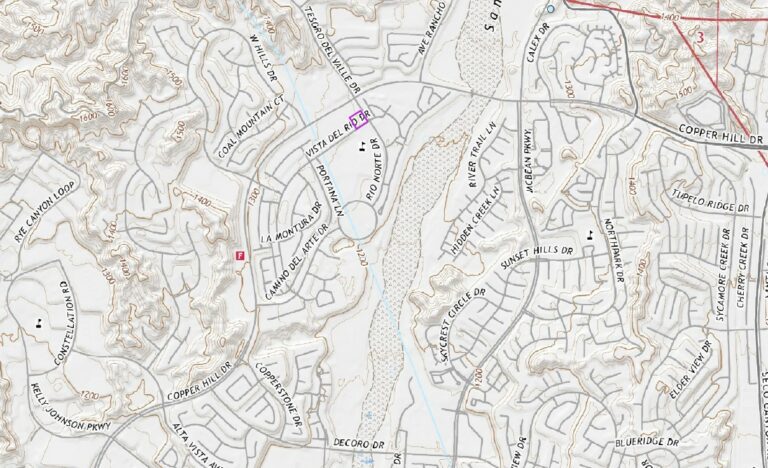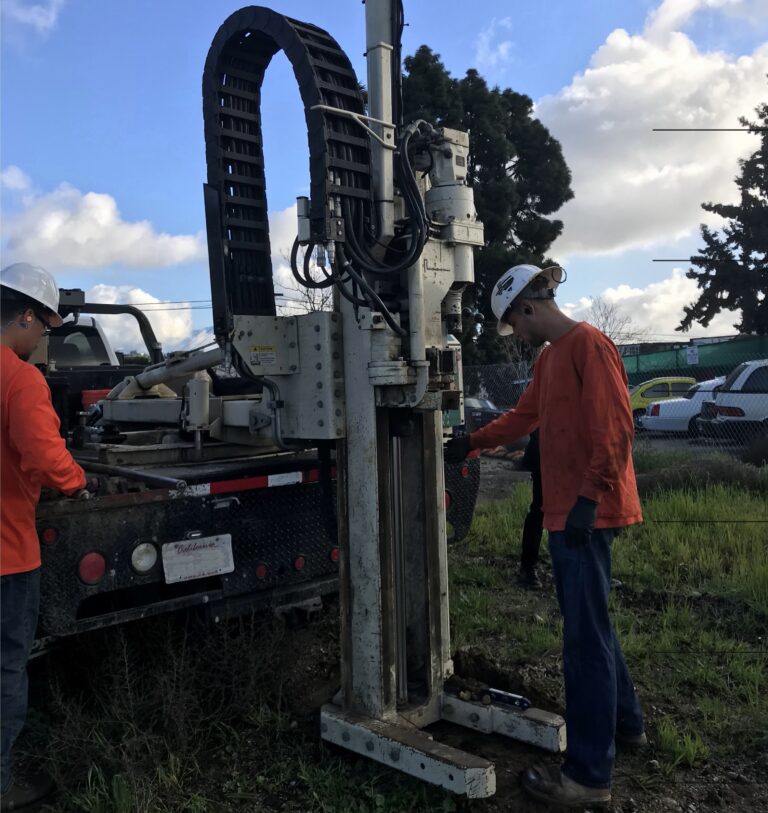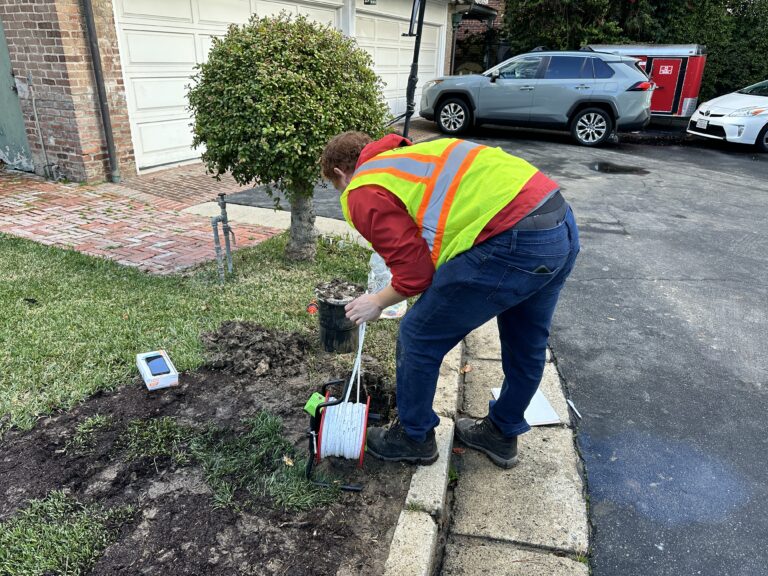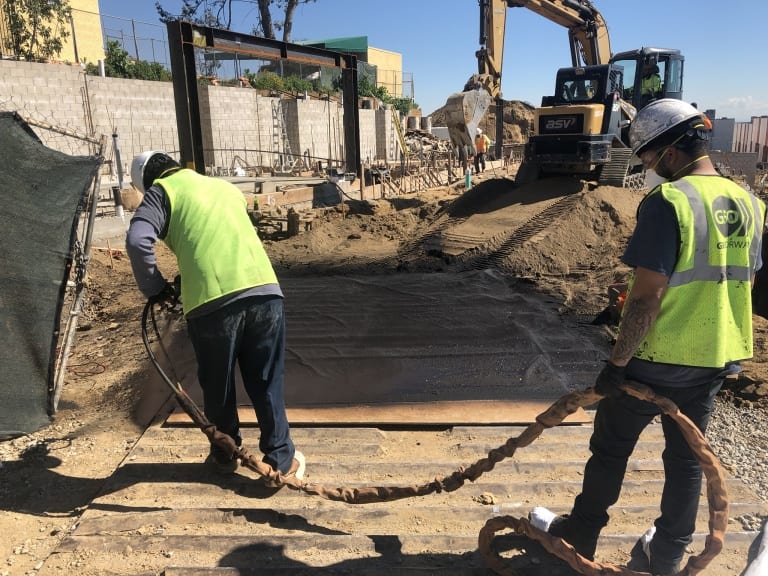Why Using the Methane Standard Plan Usually Fails Plancheck
The methane hazard standard mitigation plans from the Los Angeles Department of Building and Safety (LADBS) offer guidance for vapor mitigation. However, it does not actually satisfy the plancheck requirement for a site-specific methane mitigation plan. Per the regulations in Division 71 of the Los Angeles Building Code, various components of a passive and active mitigation system are necessary in “Methane Zones.” And the list of site-specific requirements is dependent on the results of a methane soil gas survey. The Standard Plan includes an example plan layout, illustrating how to generally apply these components. But it is not a valid mitigation plan possible by modern building department standards. Updated November 7, 2024.
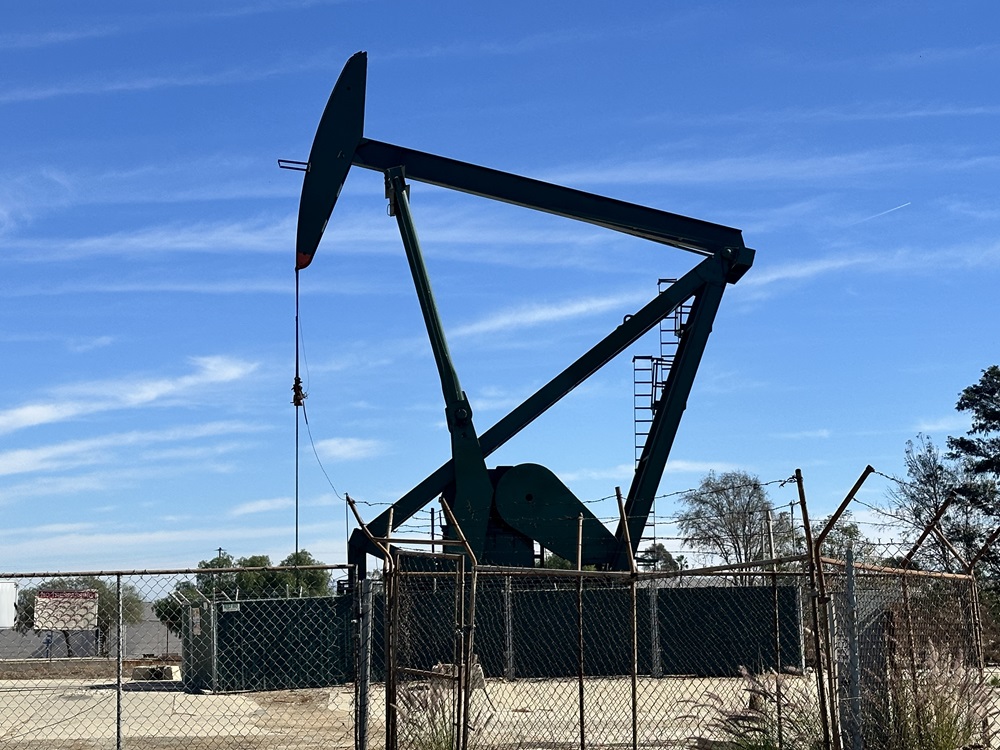
Plancheck Failure When Using the Standard Plan
The standard plan is not a complete methane mitigation design. It lacks essential details that contractors need to install the system. To make it functional for approval, methane engineers or professional geologists must engage in design work reflecting the final architectural and structural designs. A professional with expertise in methane mitigation must also use site-specific details for conflict areas, and stamp the plan before submittal.
Standard Plans Lack Material Specifications
Methane mitigation experts, plan checkers, and City building inspectors find the standard plan “incomplete” for several reasons. It fails to give clear installation guidance and has a missing parts list. For instance, it does not include any product specifications or manufacturer installation instructions for the methane barrier component. Moreover, the standard plan does not provide any specs for horizontal sub-slab vent pipes, vertical riser pipes, or their fittings.
Rather than listing product specifications, the standard plan simply instructs users to refer to the building department’s research report. In 2022, however, the LADBS Permit and Engineering Bureau began phasing out the research report program. As a result, many of the methane mitigation components no longer have a current LARR listing. This issue likely stems from the standard plan being obsolete—it’s now nearly 15 years old and lacks modern updates.
Standard Plans Lack Site Specific Layout
The Standard Plan does not include a site-specific layout for integrating mitigation components into the project. This gap requires extra design work from a professional geologist or engineer specializing in methane. When submitted as part of a plan set, it often prompts a correction, asking the methane design professional to complete Page 6 of the standard plan. This page needs to show the exact layout of both below-slab and above-slab methane mitigation components, and it must include a stamp or seal by the geologist or engineer of record.
At this stage, it would be more efficient to have the design professional create a site-specific methane mitigation design. The standard plan is not optimal for cost-effectiveness. In fact, it suggests a highly conservative and “overkill” type plan by default. Alternatively, a proper VIMS system designer can apply a practical approach by efficiently adding and removing components of a standard plan, while maintaining code compliance. For example, higher-level designs (Level III, IV, and V) require active systems. And some of these advanced systems can be optimized, substituted, or even omitted by a methane design expert who understands code requirements and exemptions.
Will the LADBS Standard Plan for Methane Mitigation be Approved?
When the standard plan is included in a submittal package, it might get initially approved. However, issues often arise later. At the plancheck stage, the standard plan will most likely not achieve approval. Sometimes, though, plancheck might approve it without noticing missing details, only for a City inspector to halt construction when they see there isn’t a proper mitigation design. Even before construction, project proponents may struggle to get bids from contractors due to the lack of information needed to estimate costs. In these cases, a methane construction professional might offer a design and build solution, completing the missing design work and implementing the plan based on their design.
Additional Considerations: Dual-Purpose Vapor Mitigation Design
The LADBS states that the standard plan does not cover flammable vapors from sources like ruptured hazardous material transmission lines, underground storage tanks, or similar installations. When vapor mitigation is a requirement, and the project is within a Methane Zone, consult a professional geologist. They can design a single plan to address all vapor intrusion and fire hazard concerns related to hydrocarbons, volatile organic compounds, and other risks.
Author
Written by: Michael J. Sabo

